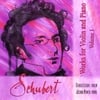It's Petrushka week for me up in Dayton! We're doing Stravinsky's complete 1911 version but with one additional audience aid: projected slides that tell the story of the "living" puppet Petrushka as the orchestra performs the piece. What a good idea.
In my eight years experience playing regularly as an orchestral pianist, I have not yet had the opportunity to perform this classic standard. Of course I've played it many, many times for every orchestral audition that I have taken (it is usually one of the more prominent required excerpts for any keyboard audition) but now I can finally get a real, in-context performance of the work behind me. It's one of those milestones that can make you feel like you're a more complete and accomplished orchestral player. It is very demanding technically with its emphasis on fast 16th-note passagework in octaves and chords (in the "Russian Dance"). But the work also requires a sensitive touch in the second tableau, where the solo piano first represents Petrushka's curses and laments and then later the arrival of the Ballerina (Petrushka's unattainable love interest).
The Petrushka score features plenty of other solo showcases for many other instruments as well; there are big solos for flute, trumpet, tuba ("the bear"!), english horn, and clarinet.
Petrushka is the second of Stravinsky's three cherished ballet pieces composed for Sergei Diaghilev's company in Paris in the years of 1909-1913. (The other two ballet-works are The Firebird and the infamous Rite of Spring.) Read more about Stravinsky and Petrushka here.
Friday, February 15, 2008
Carnivals and Puppets
Posted at
1:01 PM
![]() Subscribe to this Blog
Subscribe to this Blog
Categories: Orchestral Keyboard, Past Performances Archive
Sunday, January 13, 2008
DPO Plays Albert's Cello Concerto
Guest soloist Julie Albers brought Stephen Albert's masterful Cello Concerto to Dayton this past weekend. The epic piece (it's more than a half-hour long) was written in 1990 for cellist Yo-Yo Ma and is cast in four movements. It is a stunningly gorgeous work that combines big Romantic gestures with modern harmonic language and orchestration. The piano part is sizable and difficult, with plenty of good exposure for the instrument throughout the entire work. It is one of those orchestral parts that provides great satisfaction for the pianist at the end of the day. Tragically, this was one of the last works the accomplished American composer would write; Albert perished in an auto accident in 1992 at the age of 51.
Preparing a convincing and emotionally engaging performance of this work was a great challenge for our orchestra (I believe it would be a challenge for any orchestra). Julie Albers brought lots of intensity and energy to the cello solo, and I think we sold the piece: the audience on both nights responded with great enthusiasm.
It was really great to see large audiences open up to a sophisticated recent work that deserves to be heard more often. It is especially pertinent that this reception occurred within a community many would not associate with great love for newer and more challenging concert music. The time has certainly come for contemporary works that are accessible but don't necessarily pander to the lowest listening abilities of audiences just to get more performances. Younger soloists like Albers are aiding the cause through an exuberance for fresh repertoire and commitment to high-standard performances of that repertoire. Being involved in a performance like this gives me hope that good new music is connecting with broader audiences on deeper emotional levels; perhaps the experience is finally going beyond mere sonic impressions. For goodness sake it's about time.
Posted at
1:22 PM
![]() Subscribe to this Blog
Subscribe to this Blog
Categories: New Music, Orchestral Keyboard, Past Performances Archive







